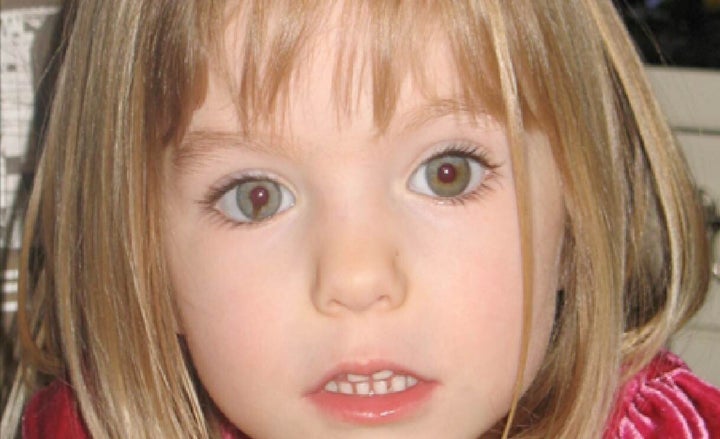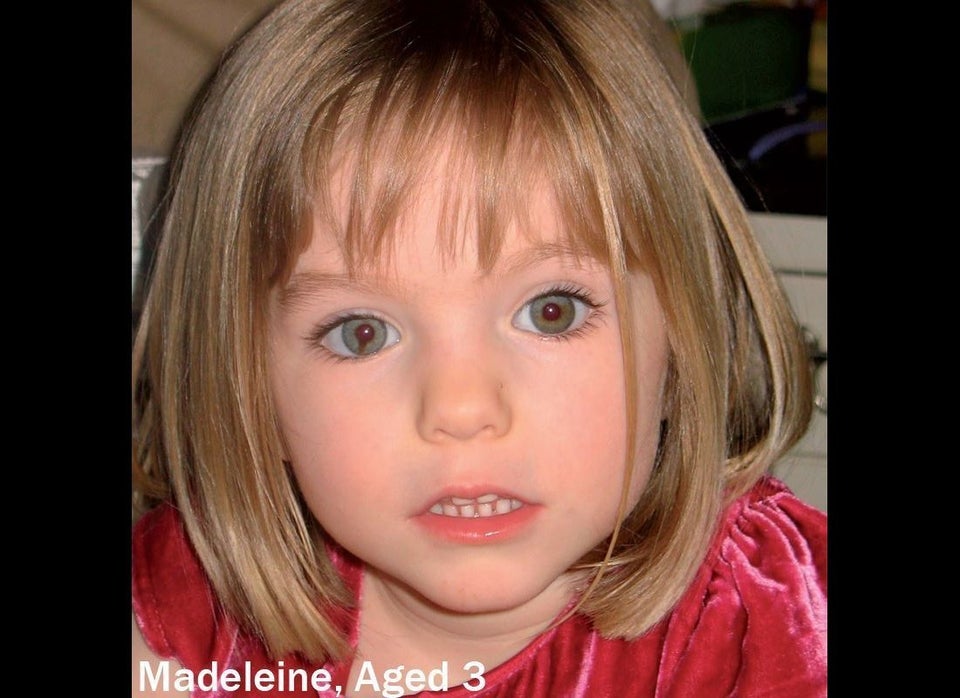
The mystery of Madeleine McCann's disappearance may lie under a driveway just outside a holiday villa in Praia da Luz, the oceanside Portuguese resort town where the 3-year-old child was last seen in May 2007.
Stephen Birch, a South African real estate developer and self-styled investigator, says he has found what could be a burial site below the surface using a ground-penetrating radar.
Birch, who has invested $50,000 of his own money investigating the case, has asked Portugese authorities to excavate the area, and three experts contacted by HuffPost Crime agreed that this would be the appropriate action.
Nevertheless, Portuguese authorities refuse to act on the information.
The controversy began in June, when Birch first examined the driveway. The property is owned by the mother of a former suspect, Robert Murat.
PHOTOS: (Article Continues Below)
"The scans indicate that the ground beneath the gravel driveway was disturbed and something lies buried underneath the driveway," Birch told The Huffington Post.
The location of the property is not far from the apartment where Madeline disappeared.
Madeline was 3 years old when she went on a trip from Britain to Portugal with her parents, Kate and Gerry McCann. The couple was dining with friends at a nearby restaurant when the little girl vanished from their holiday apartment in Praia da Luz. There have been no solid leads in the case since that time.
Scotland Yard detectives and Portuguese police were provided with hard copies of Birch's radar scans. The agencies examined them and thus far have declined to probe or excavate the location.
The office of the Prime Minister of Portugal sent Birch a letter on Sept. 10, which included a response from Almeida Rodrigues, head of Portugal's judicial police. According to the letter, authorities examined the same location with a ground-penetrating radar device in 2007 and did not find any areas of interest.
"Therefore, we are of the opinion that this does not justify the realization of the desired diligence by the advocate," they wrote.
A similar statement was made by Murat in July, during an interview with the Algarve Resident.
"Every single part of the house, inside and out, was checked in 2007 by more than 20 police officers, who found absolutely nothing. They used ground-penetrating radar equipment, which was brought by a civil protection team, to search the grounds of the property and the area surrounding Casa Liliana," Murat said.
Speaking with the same newspaper, former police inspector Gonçalo Amaral described the 2007 searches as "thorough."
Birch contends that the location where his suspicious scan was taken was not searched properly. He claims it was covered with vegetation and debris from construction materials and it would have been impossible to conduct the scanning on the rubble.
"I am in possession of photographs taken on May 15, 2007, during the initial search of the Murat property, together with a photo taken five months later of the same yard. When comparing the two photos, one can clearly see a pile of building rubble with a wooden plank lying on top of it. Both photos show the same pile of rubble, in exactly the same condition, in the rear of the Murat yard, substantiating the claim that the Murat property was not searched properly," Birch said.
Three out of four GPR (ground-penetrating radar) specialists who were shown Birch's scan agree authorities should excavate the area in question.
"There are anomalous features in the GPR data that may be due to [human] remains, but whether or not the data indicate the presence of remains cannot be determined solely from the GPR data. You must dig to find out," said Gary N. Young, senior vice president of operations and development for Underground Imaging Technologies, LLC.
Michael Wolmarans, of Imbila Location Services CC, agreed.
"After scrutinizing various scans emailed to me, there is a strong possibility of ground disturbance ... At the 3-meter mark, at a depth of 250-300mm, there is a distinct sign of a void. This suggests that the ground has been disturbed by digging. Below the void there is an object, though it is not possible to say what it is without excavating. If this were my own investigation, I would have little doubt that an excavation of the area would be required and this is what I would do," Wolmarans said.
Ralph Baird, a geophysicist from Houston, also suggested a dig.
"What is shown in one GPR profile and in a local area is just that there are objects in the box/dirt-filled area. The process needs to just dig and remove the dirt. The area is small enough for that to happen under professional or videoed supervision ... dig it up or probe it and see what is there; it's a small task -- the digging," Baird said.
Bryan Bacheller, president of Digital Concrete Imaging in Tampa, Fla., had a slightly different opinion.
"There isn't enough for me to compare typical soils to. However, there are minor disturbances that can be interpreted as human remains. With that said, I think the area is too shallow and 100 mm below the surface is a tar layer. Highly unlikely that a criminal would dig through such hard materials and in the open space of a driveway. My opinion is that this is not a crime scene," Bacheller said.
The Huffington Post notified the Office of the Prime Minister and Portugal’s judicial police about the experts' opinions. Neither agency responded to a request for comment.
Carter-Ruck, the law firm representing Madeleine's parents Kate and Gerry McCann, said they stand behind the decision of the authorities not to dig.
"Mr. and Mrs. McCann are guided by the expertise of the British and Portuguese police, both of which have studied the information provided by Mr. Birch and both of which have concluded it is not credible," Isabel Martorell, a partner at the firm, told HuffPost.
There is, as Birch points out, only one way to settle the controversy.
"Dig. If you think I am wrong, then I am going to ask you one simple question, a question millions of people are asking: why haven't they dug or put probes down there?"

